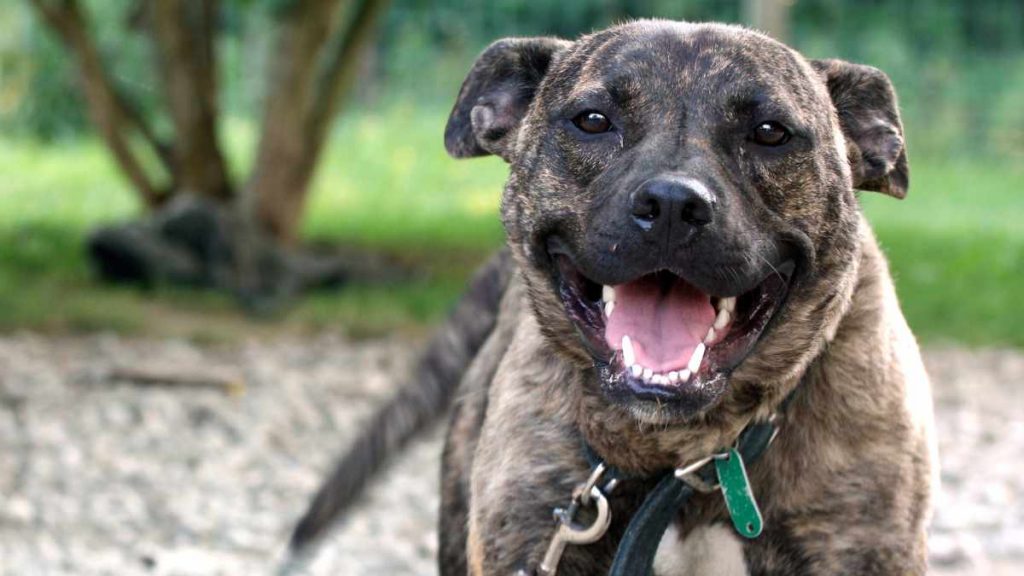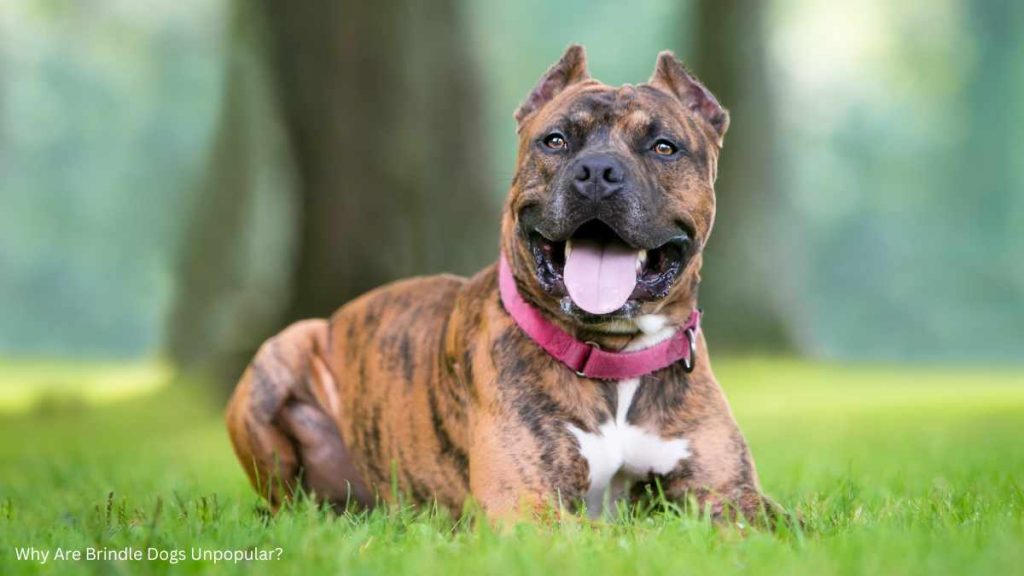Brindle dogs, often overlooked and underappreciated, possess a unique and captivating beauty. However, they tend to be less popular among dog lovers and potential adopters.
In this article, we, a dog care organization, delve into the reasons behind the relative unpopularity of brindle dogs, dispel misconceptions, and shed light on the remarkable qualities these dogs possess.
Table of Contents
What are Brindle Dogs?
Brindle dogs display a distinct coat pattern characterized by a mixture of dark and light stripes or flecks. This pattern can be seen across various breeds, adding an alluring touch of individuality to their appearance. Some popular brindle dog breeds include Boxers, Greyhounds, Dutch Shepherds, and French Bulldogs.
Brindle Dog Breeds

Here is a list of popular dog breeds that often showcase the stunning brindle coat pattern:
- Boxers: Boxers are well-known for their strong and muscular build, and their brindle coats add an extra touch of elegance to their appearance.
- Greyhounds: Renowned for their grace and agility, Greyhounds can be seen in striking brindle coats that accentuate their sleek and athletic forms.
- Dutch Shepherds: Alongside their intelligence and versatility, Dutch Shepherds often display beautiful brindle coat patterns, further enhancing their remarkable presence.
- French Bulldogs: French Bulldogs are beloved for their adorable personalities, and their brindle patterns only add to their charm and uniqueness.
- Cane Corsos: These powerful and protective dogs often exhibit striking brindle coats, combining their robust physique with an eye-catching appearance.
- Staffordshire Bull Terriers: Staffordshire Bull Terriers, with their friendly and affectionate nature, are frequently seen with brindle coats that showcase their lovable personality.
- Boxer Bulldogs: A mix of Boxers and Bulldogs, these hybrids often inherit the brindle coat from their Boxer parent, making them visually striking and lovable companions.
- Plott Hounds: Plott Hounds, known for their excellent tracking skills and loyalty, often exhibit gorgeous brindle coats, making them both exceptional working dogs and devoted family pets.
- Whippets: Whippets, similar to Greyhounds, possess a graceful and slender physique, and their brindle coats accentuate their sleek lines, making them truly eye-catching.
- Basenjis: Basenjis, recognized for their independent and curious nature, can be seen in brindle coats that add a touch of uniqueness to their elegant appearance.
Why Are Brindle Dogs Unpopular?
A. Lack of Awareness and Understanding
One primary reason for the unpopularity of brindle dogs is the lack of exposure and understanding. Many people may not have encountered brindle dogs, leading to unfamiliarity with their unique coat patterns. As a result, potential adopters may gravitate towards more commonly seen coat colors.
B. Preference for Certain Coat Colors
Solid-colored coats, such as black, tan, or white, have long been favored by many individuals. Societal perception plays a role in this preference, as certain colors are often associated with beauty or desirability. The distinctive and intricate patterns of brindle coats may not always conform to these preferences, leading to their relative unpopularity.
C. Influence of Media and Breed Standards
Media representation and breed standards can significantly impact the popularity of dog breeds. If brindle dogs are underrepresented or portrayed negatively in media, it can perpetuate misconceptions or biases against them. Additionally, some breed standards may favor specific coat colors, inadvertently contributing to the lower demand for brindle dogs.
Challenges Faced by Brindle Dogs

A. Difficulty in Finding Homes
Due to their relative unpopularity, brindle dogs may encounter challenges in finding suitable homes. The lower demand for brindle coats means there are fewer adopters specifically seeking out these dogs, leading to longer stays in shelters or rescues.
B. Breed Discrimination and Misconceptions
Some brindle dog breeds, such as pit bulls, face discrimination and misconceptions due to inaccurate stereotypes. This unfair association can negatively impact adoption rates and public perception, further perpetuating the unpopularity of brindle dogs.
Benefits and Positives of Brindle Dogs
A. Unique and Eye-Catching Appearance
Brindle dogs possess a captivating and distinct beauty that sets them apart from their solid-colored counterparts. The intricate patterns and contrasting colors make them stand out in a sea of more commonly seen coats, allowing them to be eye-catching and memorable.
B. Temperament and Personality Traits
While the coat color does not dictate a dog’s personality, certain brindle dog breeds are known for their desirable traits. Boxers, for example, are known for their loyalty and friendly nature, making them great family pets. Greyhounds are often gentle and affectionate companions, while Dutch Shepherds showcase intelligence and versatility.
Steps to Promote the Popularity and Acceptance of Brindle Dogs
A. Education and Awareness Campaigns
To increase the popularity and acceptance of brindle dogs, it is crucial to educate the public about their unique qualities. By dispelling misconceptions, promoting positive narratives, and showcasing the beauty of brindle coats, we can foster greater appreciation for these remarkable dogs.
B. Encouraging Responsible Breeding Practices
Breeders can play a vital role in promoting brindle dogs by prioritizing and preserving the brindle coat patterns in their breeding programs. This diversity will not only enrich the dog population but also ensure that brindle dogs have equal representation and opportunities for adoption.
C. Emphasizing Individuality and Uniqueness
By celebrating the distinct beauty and charm of brindle dogs, we can encourage potential adopters to consider these dogs as companions. Highlighting the unique qualities they bring to the table can help shift the perception of brindle dogs and increase their desirability.
FAQ
A. Are Brindle Dogs Rare?
No, brindle dogs are not considered rare. The brindle coat pattern is relatively common among various dog breeds, showcasing the diversity and prevalence of this beautiful trait.
B. Are Brindle Pit Bulls Aggressive?
Contrary to popular misconceptions, brindle coat patterns have no bearing on a dog’s temperament. Like any other dog, pit bulls with brindle coats can display a wide range of personalities, but their coat color alone does not indicate aggressiveness or docility.
C. What Two Colors Make Brindle Dogs?
The brindle pattern is created by the combination of two or more colors, typically darker and lighter shades. The specific colors that blend together to form the brindle pattern can vary, resulting in a range of unique and eye-catching combinations.
D. Are Brindle Dogs More Expensive?
The cost of a brindle dog does not necessarily differ from other coat colors. Factors such as breed, pedigree, and availability may impact the price of a dog more significantly than the color of its coat.
E. Why Are Brindle Dogs More Aggressive?
Brindle dogs are not more aggressive based on their coat color. Aggression in dogs is not determined by their coat pattern but rather influenced by factors such as genetics, training, and individual temperament.
Conclusion
Brindle dogs, despite their relative unpopularity, possess exceptional beauty, unique coat patterns, and remarkable qualities that make them wonderful companions. By understanding the factors behind their unpopularity, dispelling misconceptions, and emphasizing their individuality, we can work towards changing perceptions and ensuring that brindle dogs receive the love and care they deserve.
Let us celebrate the beauty behind the brindle coat and open our hearts to these amazing dogs.
You May Also Like:
Why Are Schnauzers the Worst Dogs? Cracking Myths
Top Hypoallergenic Mixed Breeds: Perfect Dogs for People with Allergies

